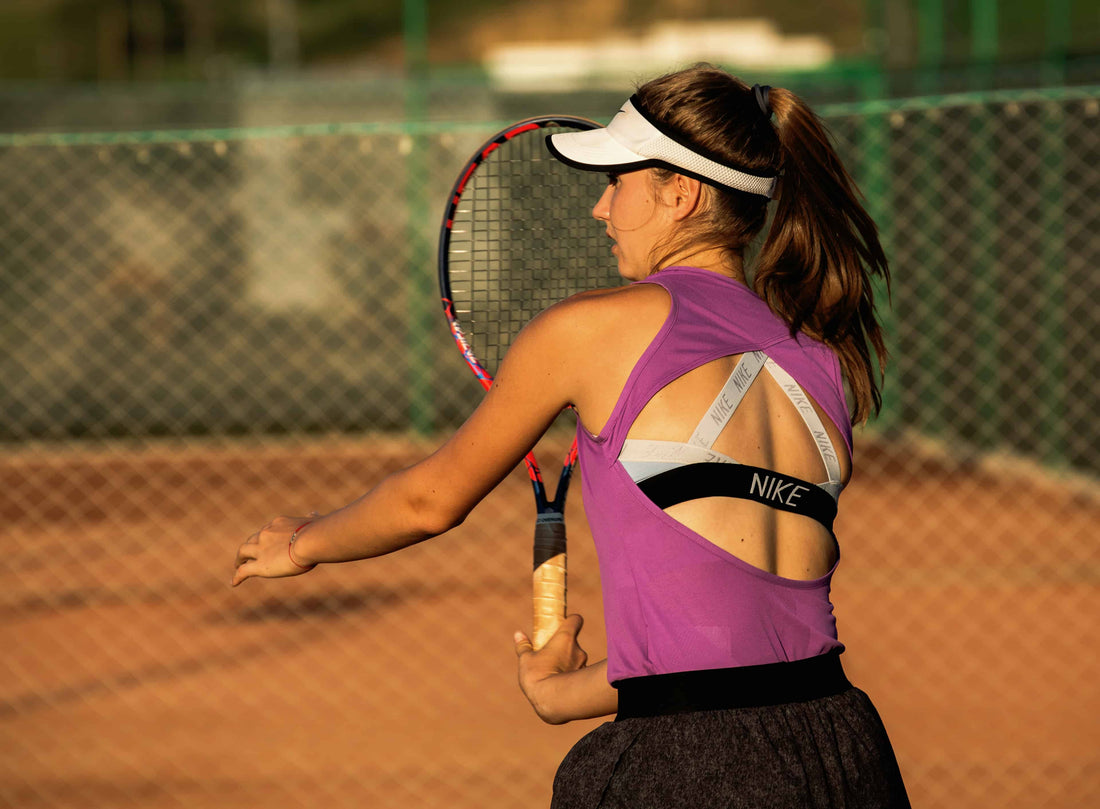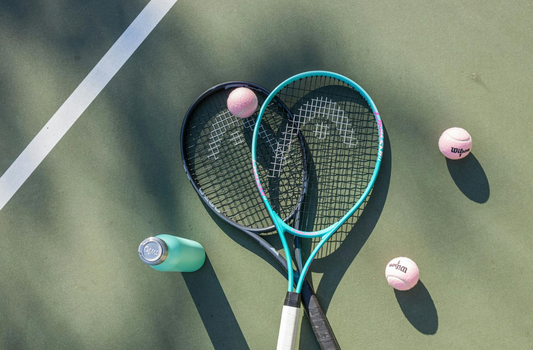Now that you know how to keep score in tennis, here’s an overview of how serving works. For beginners, serving is often the most difficult part of the game to master, but before perfecting your technique, make sure you understand the ins and outs of the rules.
Starting a Match
Choice of Ends & Service
Before the start of the match, the players/teams determine who gets to choose to serve or receive and who gets to choose the end on which to begin the match by “toss” (many players spin a racquet for this). Whoever wins the “toss” may choose whether to serve or receive first, the end of the court, or to require the opponent to make the choice. If the player/team who wins the toss chooses whether to serve or receive, the other player/team gets to choose ends. If the player/team who wins the toss chooses ends, the other player/team gets to choose whether to serve or receive.
Most players/teams who win the toss choose to serve or receive, with the majority choosing to serve, since serving first is generally seen as an advantage. As a beginner, if serving is a weakness, then it may be better to choose to receive first. However, if the weather is a big factor (e.g., the sun/shadows are a hindrance, or the wind is strong), it may be advantageous to choose which end of the court to start from.
Serving Order
In doubles, the team gets to decide which of the two players serves first. Most teams have the stronger server serve first. The partner of the first server will serve the next time that team is up to serve, and the rotation continues in that order until the end of the set.

Starting a Point
Foot Placement
The server must stand between the centre mark and the sideline on the side from where she is supposed to serve. Generally, singles players stand closer to the centre mark when serving, whereas doubles players stand closer to the sideline when serving. This is because singles players need to cover the entire court, while doubles players only need to cover their half of the court, including the doubles alley.
Before serving, both feet have to start behind the baseline, and the feet cannot cross the baseline until after the service motion is completed. Otherwise, the serve will result in a foot fault.
Each service game begins with the server standing on the right side of the court (the deuce court), except during a tie-break. The serve must go over the net without touching the net and land in the service court diagonally opposite from where the server is standing. If a server forgets which side she should be serving from, an easy way to figure it out is based on the score. When an even number of points have been played (e.g., 15-15), the server serves from the right (deuce) court, and when an odd number of points have been played (e.g., 40-30), the server serves from the left (ad) court.
Receiver Readiness
Before serving, the server should make sure that the receiver is ready. While there isn’t a set time limit as to how long a server should wait for a receiver to be ready, according to the ITF Rules of Tennis, the receiver shall “play to the reasonable pace of the server.” If the receiver causes a delay between serves, the server will get two more serves.
Although not a hard and fast rule, the server should also ensure that the court is clear of stray balls before starting a point.
Calling Score
Until a player makes it to the big leagues and plays in tournaments with chair umpires, most players call their own scores. The server should start each point by calling out the score loudly and clearly. At the start of a new game, the server should call the set score. Once the game has begun, the server only needs to call the game score before each point.
Service Faults
There are many ways that a serve becomes a fault. The most common form of a fault is when the ball does not land in the proper half of the service court. An attempted serve is also a fault if the server tosses the ball and misses it while trying to hit it, if the server hits the ball, and the ball touches a permanent fixture or net post before it lands in the proper service court, or if the ball touches the server or server’s partner.
After tossing a ball, a server is allowed to catch the ball with her hand or racquet, or let it bounce, without penalty, if she feels that the toss was bad.

Second Serves
If a server’s first attempt at a serve is a fault, she gets the opportunity to serve again. The second serve should occur promptly after the first serve is deemed a fault, and it should be attempted from the same half of the court as the first attempt.
Service Lets
A let, which beginners often mispronounce as “net,” occurs when a serve touches the net, strap, or band, and then lands in the correct service court or touches the receiver or receiver’s partner before hitting the ground. If a serve directly hits the receiver or the receiver’s partner before hitting the ground, then that point automatically goes to the server. A let also occurs if the server serves before the receiver is ready.
When a let is called, the serve does not count, and the server gets to re-serve the point. However, if the let occurred during a second serve, it does not cancel out the fault, and the server only gets another second serve.
Double Faults
If the server misses both the first and second serves, then the server has double-faulted, and she loses the point.
Service Calls
According to The Code: The Players’ Guide to Fair Play and the Unwritten Rules of Tennis” published by the USTA, neither the server nor the server’s partner should call a fault on the first serve even if they think it is a fault because the receiver may be giving the server the benefit of the doubt. The exception is if the receiver attempts to return that first serve and does not put the return in play, then the server or server’s partner may call the fault. For a second serve, the server and the server’s partner should call a double fault if either one sees that the second serve is clearly out.
Any player, whether on the serving or receiving team, may call a service let.
Conclusion
Serving is the most important part of a tennis player’s game since it’s the one part of the game over which a player has complete control. Once you understand the basics of serving, head out to a court with your ball hopper and start serving away. Before you know it, you’ll be practicing slice serves and kick serves, while deciding whether you want to go down the “T” or out wide.




